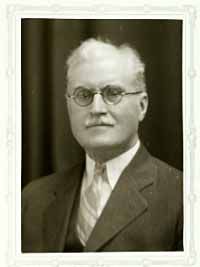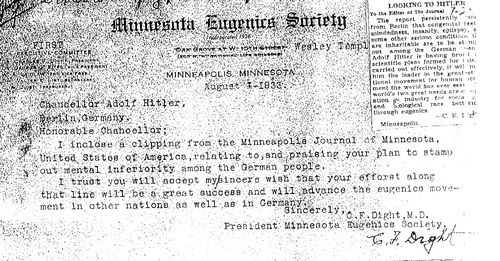Few aspects of U.S. history have the ability to make a rational 2011 person ask “what were they thinking?” than America’s eugenics laws.
Under principles of protecting the gene pool, state governments — Minnesota included — ordered the forced sterilization of people, usually African Americans, the mentally ill, and the disabled. It reached its zenith in the 1920s and ’30 and fell into disfavor after the horrors of Nazi Germany were exposed.
Today, a task force in North Carolina recommended that state pay compensation to 7,600 people who were involuntarily sterilized. About 3,000 of them are still alive. The task force did not indicate how much the state should pay, but the Associated Press says it could be anywhere between $20,000 and $50,000.
 Minnesota was the 17th U.S. state to pass a eugenics law when the Legislature voted to do so in 1925.
Minnesota was the 17th U.S. state to pass a eugenics law when the Legislature voted to do so in 1925.
Its chief proponent in Minnesota, according to this paper from a University of Vermont sociologist, was Charles Fremont Dight
Dight argued that mental inferiority could be easily identified by two things: jazz and skull shape. Jazz, according to Dight was the ‘devil’s kind”, and was enjoyed more by the inferior because it appealed to their “inborn animal nature” (Hudulla, p. 9). Craniometry the study of the size and shape of skulls/brains was also a crude tool used by Dight to assess mental capabilities. His argument is that “great men” have larger fore heads representing their larger frontal lobe, where as “lower animals” including the feeble minded and inferior would have smaller foreheads (Hudulla, p. 9). Dight’s beliefs on craniometry ultimately stemmed from a professor of clinical surgery: Paul Broca. As a “cure” for mental defectives Dight turned to the well known practice of farming. He argued that much like a farmer would bred his two healthiest animals together, humans should also only breed the best with the best. Dight sought to extend breeding practices to humans (Hudulla, p. 25). Not only should humans stop the unfit from reproducing, but he breeding of “thoroughbred should be encouraged. (Hudulla, p. 26). To properly execute human breeding Dight suggested to “learn if feeble-minded-ness, insanity, epilepsy, or repeated criminality have existed during the last three generations” of your potential mate (Hudulla, p. 30). In this way Dight hoped to prevent the marriage of the reproductively unfit (Hudulla, p. 30).
The Minnesota law that Dight championed allowed sterilozation of the “feeble-minded” and insane who were resident in the state’s institutions. But Dight was unable to get the Legislature to include sterilization of the “unfit” who lived outside of institutions, according to the Minnesota Historical Society.
An institute for genetics studies, named after Dight, existed at the University of Minnesota until the 1960s.

